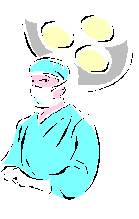





| |
To live is to suffer, to survive is to
find some meaning in the suffering.
Roberta Flack
Suffering is a state of emotional and mental distress that arises
when we are experiencing pain. The pain is merely a sensation. The suffering is
our personal negative response to the pain. The response includes thoughts,
images, energy tones i.e., emotions and actions.
 | The energy tones can include any of the negative emotions such as
anxiety, fear, jealousy, envy, anger, disappointment, sadness, depression,
guilt, shame, worry, or insecurity. |
 | The thoughts
 | I don't deserve this pain. |
 | This pain should not be occurring. |
 | I hate this pain. |
 | This pain makes me less than I should be. |
 | The pain implies that I am a flawed person. |
 | I am worried that I will feel more pain in the future. |
 | There is too much pain in my life at this time. |
 | There has been too much pain throughout my life. |
 | This pain implies that the world is a cruel place. |
 | Pain is a bad thing. |
 | I am a helpless victim. |
 | The world is evil. |
|
The constructive aspects of suffering.
 | Suffering draws our attention to a problem in our lives. While we can
ignore mere pain, suffering is so unpleasant that it compels us to examine the
problem. |
 | Suffering leads us to examine the deeper issues of our life. While we can
associate pain with a particular situation, suffering is associated with broader
issues such as the nature and meaning of life, the nature of ourselves and our
character, the nature of desire and attachment. |
 | Suffering can increase our empathy and compassion with the conditions of
other people. |
 | Suffering helps us to recognize pleasure, by providing a contrast to
that pleasure. |
The destructive aspects of suffering.
The thoughts, images, energy tones, and actions that are associated with
suffering linger in our designs. When this design situation occurs again, we
tend to evoke those same negative elements, that distort our perception of this
unique situation.
 | Suffering can be so intense that :
 | It distracts us from the goodness of life. We adopt a global view that
life is bad. |
 | We give up. We stop trying to explore and change conditions and we
withdraw from life. |
 | We repress our awareness including our awareness of the condition that
is causing the pain. We numb ourselves. |
|
Techniques for dealing with pain and
suffering.
 | Design-work. We can generate energy tones such as patience,
peacefulness, hope, and contentment.
 | Affirmation. "Pleasure and pain are parts of life.",
"I find happiness in the present moment.", "Life is
ultimately for my good.". We refrain from using an affirmation which
attaches a destructive meaning to our pain. Some of those destructive
affirmation statements are in the list of thoughts in the first part of this
section. |
 | Directed imagination. We can visualize ourselves experiencing pain
without experiencing suffering. In this visualization, we can see ourselves
with a calm smile on our face. |
 | Modeling We can act as if we can endure pain without creating
suffering. |
|
 | Intuition. Intuition can reveal the cause of the pain, so that we can
resolve it. Intuition can guide us in our response to the pain, so that our
thoughts, images, energy tones, and actions do not create suffering. Intuition
can also help us to recognize the design aspect of the situation. We see that we
experience a similar pain whenever this design situation occurs. |
 | We can explore the reason for the pain. We can accept responsibility for
creating the conditions that are causing pain. If we are suffering with a
physical illness, we can discover that the illness is a result of our
unhealthful behaviors such as smoking cigarettes. |
 | We can accept our pain. We can accept pain while still disliking it, and
while working to change the unpleasant conditions. Acceptance simply means that
we are willing to acknowledge the pain's presence, so that we can perceive it
clearly instead of repressing our awareness of it. We stop resisting and
fighting the simple reality that this pain exists. Some of our suffering is our
hatred of the pain. In addition to the acceptance of this particular pain, we
accept the fact that pain is a natural part of life. |
 | We can explore the sensation of pain. The pain is not a thing in itself.
It is merely a sensation that we have labeled as pain. Our exploration does not
end the pain, but it can be an interesting education into the nature of pain and
suffering. While we are exploring the pure sensation, we are not suffering. We
are not aggravating the pain with any intensifying thoughts, images, energy
tones, or actions. |
 | We refrain from numbing ourselves to our emotional pain. If we numb
ourselves to pain, we simultaneously numb ourselves to pleasure and to life
itself. |
 | We can accept change. When change occurs, we detach from what was, and we
accept what is here now, because it is life. We can live in the moment. Some
suffering occurs because we are looking at the past and the apparent pattern of
pain in our life, or the future and the possibility of more pain in the future. |
 | We can love the thing that is experiencing pain. We do not hate our
injured body, instead, we offer love, compassion, and healing. |
 | We can develop courage, to live life fully despite the occasional pain. |
Suffering is the ancient
law of love; there is not quest without pain; there is no lover who is not also
a martyr.
Heinrich Suso
Next topic: Relaxation |
